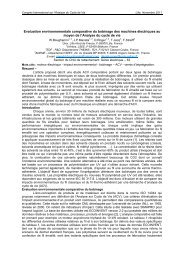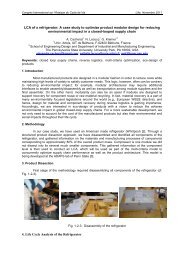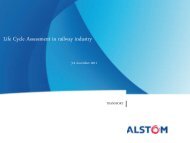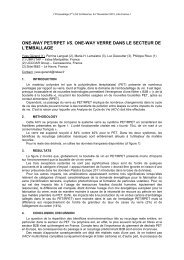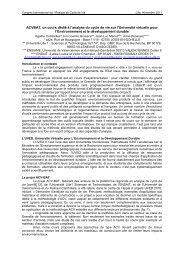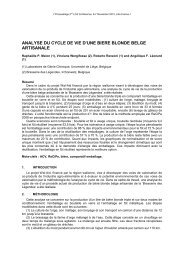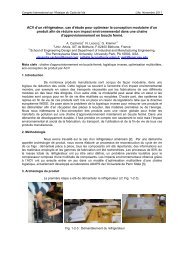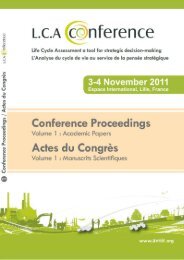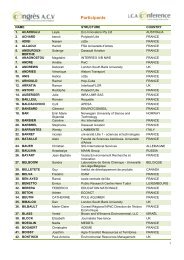Assessing Temporary Carbon Storage in Life Cycle Assessment and ...
Assessing Temporary Carbon Storage in Life Cycle Assessment and ...
Assessing Temporary Carbon Storage in Life Cycle Assessment and ...
You also want an ePaper? Increase the reach of your titles
YUMPU automatically turns print PDFs into web optimized ePapers that Google loves.
elative importance of different GHGs <strong>and</strong> due to the various value-judgements there will not be a<br />
perfect metric, imply<strong>in</strong>g that every metric will require some sacrifices.<br />
The value judgements that are <strong>in</strong>herent <strong>in</strong> metrics imply that the future development <strong>and</strong> analysis of<br />
metrics requires <strong>in</strong>put from a variety of discipl<strong>in</strong>es [2]; such as the natural sciences, economics, <strong>and</strong><br />
political scientists. The natural sciences can use metrics to quantify the relative weights between the<br />
different GHGs, <strong>and</strong> how realistic those weights are to the physical realities of the climate system.<br />
Economists can quantify how different metrics impact on economic efficiency <strong>and</strong> distribution of costs<br />
between countries <strong>and</strong> sectors. Political scientists can assess the political feasibility of metrics. By<br />
work<strong>in</strong>g together, new metrics may be designed which come closer to strik<strong>in</strong>g a balance between<br />
compet<strong>in</strong>g issues. Importantly, an <strong>in</strong>terdiscipl<strong>in</strong>ary approach to metrics may re<strong>in</strong>vigorate debate <strong>in</strong>to<br />
metric design which will ultimately lead to a better policy outcome.<br />
1. Economic <strong>and</strong> policy framework<br />
2. Economic <strong>and</strong> policy framework<br />
Cost‐effectiveness approach (UNFCCC)<br />
a)<br />
Cost‐benefit approach<br />
3. Time considerations<br />
Fixed time horizon<br />
20 years (IPCC)<br />
100 years (IPCC)<br />
a)<br />
500 years (IPCC)<br />
Any other period<br />
Time‐dependent horizon<br />
b) Discount<strong>in</strong>g<br />
c) Post‐horizon effects<br />
4. Indicator of climate effects<br />
Radiative forc<strong>in</strong>g<br />
Temperature change<br />
a)<br />
Sea level rise<br />
Damage<br />
End‐po<strong>in</strong>t<br />
b)<br />
Integrated<br />
Level of change<br />
c)<br />
Rate of change<br />
5. Other Assumptions<br />
Pulse emissions<br />
a)<br />
Susta<strong>in</strong>ed emissions<br />
Emissions scenarios<br />
Emissions of 1kg<br />
b)<br />
Emissions of a larger magnitude<br />
Constant background<br />
c)<br />
Transient background (emissions scenarios)<br />
Global response<br />
d)<br />
Regional response<br />
Po<strong>in</strong>t estimate<br />
e)<br />
Uncerta<strong>in</strong>ty<br />
6. Issues to consider<br />
• Forc<strong>in</strong>g relationship (l<strong>in</strong>ear/non‐l<strong>in</strong>ear)<br />
• IRF specification (l<strong>in</strong>ear/non‐l<strong>in</strong>ear)<br />
a)<br />
• Experimental setup<br />
• Model specification<br />
35



